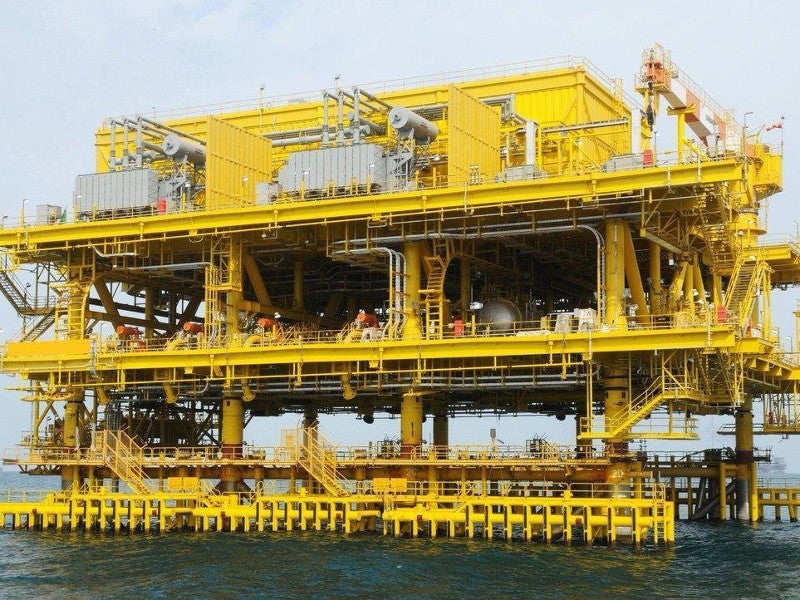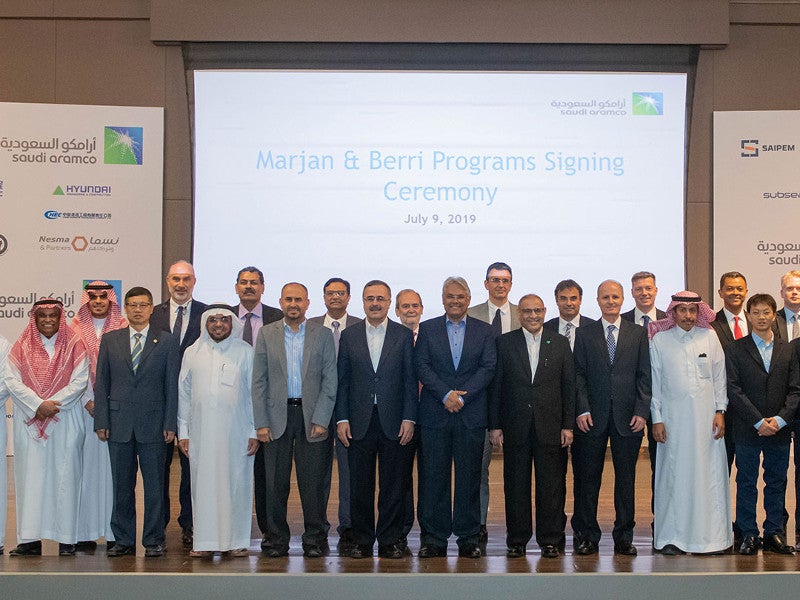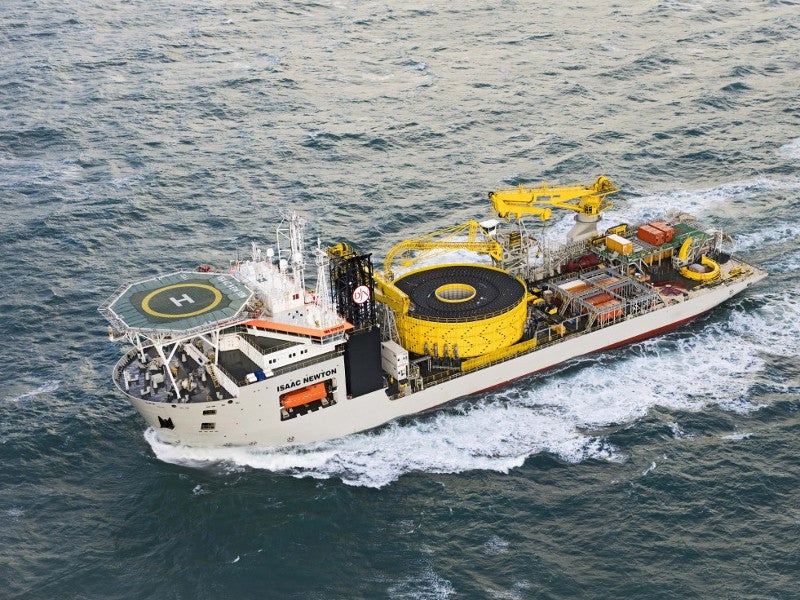Marjan is one of the oldest and biggest offshore oil and gas fields in the Arabian Gulf, Saudi Arabia. Producing since the 1970s, the offshore field continues to be revamped to expand its crude and gas production capacities.
Saudi Aramco, the owner and operator of the field, announced the implementation of Marjan increment program (MIP) to expand the crude production from the field to 800,000 barrels per day (bpd) in 2017. It will help the state-owned oil major to maintain its overall maximum sustained crude production capacity at 12 million barrels a day (Mbod).
Front-end engineering and design (FEED) studies were started in 2017, while multiple developmental work packages for the expansion project were awarded in 2018 and 2019.
The estimated investment for the Marjan increment project is £9.67bn ($12bn).
Scheduled for completion in 2022, the project is expected to add 300,000bpd of Arabian Medium crude production from the field, apart from producing 2.5 billion standard cubic feet per day (bscfd) of gas and 360,000 bpd of ethane and natural gas liquids (NGL).
Marjan field location, discovery, and development details
The Marjan field, located near the Zuluf oil field, was discovered in 1967. The complex also includes three smaller offshore fields, namely Lawhah, Maharah, and Hamur.
Estimated to contain 2.31 billion barrels of crude at the time of discovery, the giant Marjan field is located on Iran-Saudi Arabian water borders. The Iranian portion of the field is known as the Foroozan field.
Crude production from Marjan started after the offshore installation of a gas and oil separation plant (Marjan GOSP-1) in 1973. The production capacity of the Marjan GOSP-1 was 100,000bpd of oil and 175 million standard cubic feet of gas a day (Msfcd).
The offshore GOSP was, however, suspended in the 1980s and oil from the Marjan wells was piped at reduced volumes for processing onshore.
Further, in 1994, production from the Marjan field was increased to 600,000bpd of oil and 675Mfcd of gas, by bringing on-stream two more offshore GOSPs (Marjan GOSP-2 and GOSP-3).
Crude and compressed gas from the GOSPs were routed to the onshore facility at Tanajib for further processing. Saudi Aramco also started controlling the entire operation of the Marjan field from a computerised onshore control centre at Tanajib in the same year.
Marjan field expansion details
The MIP is an integrated development plan to retrieve more oil, associated and non-associated gas, as well as cap gas from the Marjan offshore field.
The expansion project involves the construction of a new offshore gas oil separation plant (Marjan GOSP-4) and 24 oil, gas, and water injection offshore platforms. The new GOSP will be designed to handle up to 475,000bpd of oil and 750Mscfd of gas.
The initial offshore works for the project included deck replacement of two existing tie-in platforms, the removal of existing gas turbine generators, and the installation of two new 115kV subsea cables.
The onshore components of the project involve the expansion of the processing facility at Tanajib with the construction of a new gas treatment and processing plant, as well as NGL recovery and fractionation, and gas compression facilities.
Contractors involved
McDermott, in consortium with China Offshore Oil Engineering Company (COOEC), was awarded a £2.4bn ($3bn) engineering, procurement, construction, and installation (EPCI) contract for the Marjan GOSP-4 in July 2019.
The scope of the contract includes six topside platforms and jackets, 12 bridges, and six bridge support platforms and jackets, apart from 70km of 36in-diameter oil export pipelines, and 90km of 230kV composite subsea cables.
McDermott was also awarded a separate EPCI contract worth £1.2bn ($1.5bn) in the same month, for three tie-in platforms, seven wellhead platforms, and the installation of 540km of subsea trunk lines and in-field pipelines.
Saipem was awarded the EPCI contract for the new gas treatment and sulphur recovery units at the Tanajib onshore processing facility in July 2019.
It followed another EPCI contract awarded to the Italian company for the sybsea systems including new platform decks and jackets, as well as the installation of subsea cables and umbilicals for the Marjan oil field development, in January 2019.
Sinopec Engineering, a subsidiary of Sinopec Group, won the contract for two pipeline projects for the Marjan increment programme in July 2019.
L&T Hydrocarbon Engineering (LTHE) was contracted for four tie-in platforms, one tie platform module, nine production deck modules, along with 217km of subsea pipelines and 145km of subsea cables, in July 2019.
WorleyParsons was contracted to provide FEED services for the Marjan field expansion project in July 2017, while Wood Group was engaged for engineering and project management services in February 2018.Baker Hughes, a subsidiary of GE, was contracted to provide drilling, drilling fluid engineering, and coiled tubing services for the project in September 2018.
Jan De Nul Group was contracted for the installation of two subsea cables and umbilical for the Marjan field expansion in February 2016.






